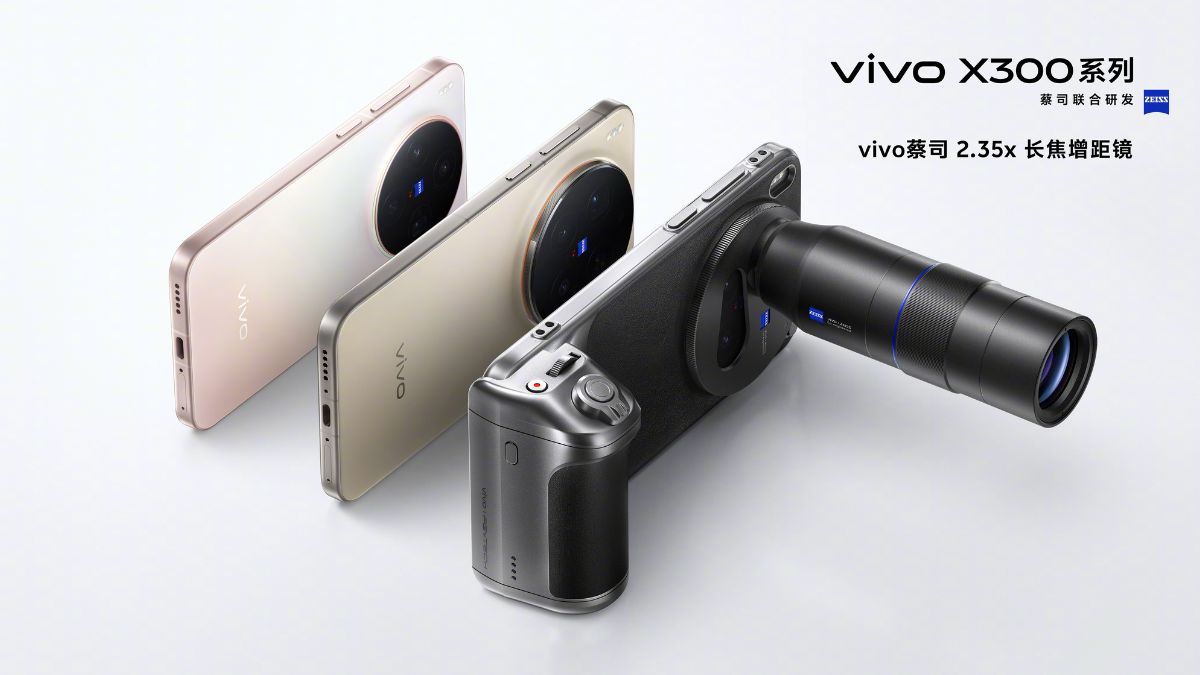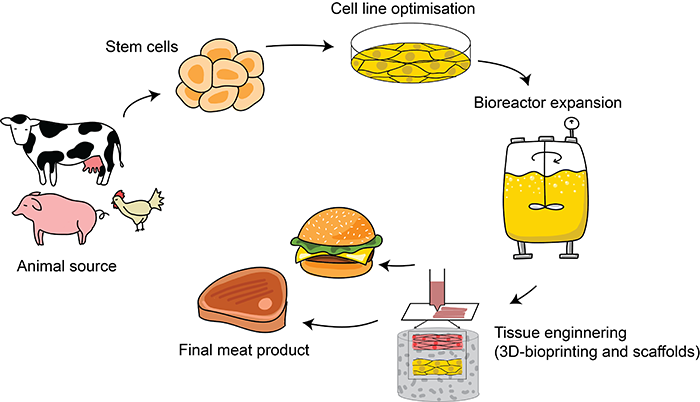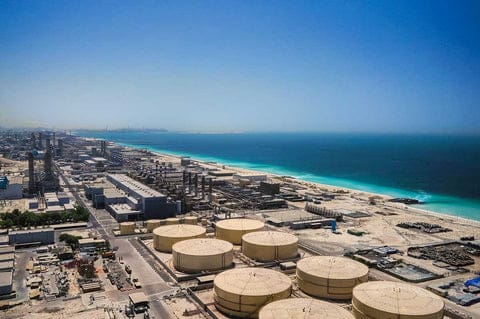Growing Colors Without Chemicals - Revolutionizing Fashion and Beyond

Imagine a world where your favorite clothes don't just make you look good, but also help the planet breathe a little easier. Did you know that the fashion industry is one of the largest polluters in the world, with the average garment being worn just seven times before being discarded? But what if we told you there's a revolution brewing? Natural dyes, derived from plants, insects, and microorganisms, are taking center stage. In fact, the global natural dyes market is projected to reach $2.4 billion by 2025. Let's explore how this shift towards chemical-free colors is not just a trend, but a movement that's changing the face of fashion and beyond.
The Dark Side of Synthetic Dyes
You've likely worn clothes with vibrant colors, but have you ever stopped to think about where those colors come from? Synthetic dyes have been the go-to choice for fashion and textiles for decades, thanks to their low cost and wide range of hues. However, there's a darker side to these chemical-based dyes. The numbers are staggering. The global textile industry uses over 700,000 tons of synthetic dyes every year, with a significant portion ending up in waterways. According to the World Bank, 72% of water pollution in some regions is attributed to textile dyeing and treatment. These chemicals don't just harm the environment; they also pose serious health risks to humans and wildlife. For instance, a study by the Environmental Protection Agency (EPA) found that some synthetic dyes can cause cancer and disrupt hormone balances. Let's take a closer look at the impact on our water systems. When synthetic dyes are washed out of clothes, they can contaminate rivers and oceans. The Citarum River in Indonesia is a prime example. Once known as the most polluted river in the world, it's been overwhelmed by textile waste, including synthetic dyes. The effects on local communities and wildlife have been devastating. The fashion industry's reliance on synthetic dyes is unsustainable. Experts like Dr. Ritu Mathur, a textile expert, emphasize the need for change. "The industry needs to shift towards more sustainable practices," she says. "Natural dyes and new technologies can help reduce the environmental impact of textile production." You're probably starting to wonder if there's a better way. There is. As consumers become more aware of the environmental and health implications of synthetic dyes, the demand for sustainable alternatives is growing. This shift is driving innovation in the textile industry, paving the way for a more eco-friendly future. The question is, are you ready to join the revolution? By choosing sustainable fashion and textiles, you can help reduce the demand for synthetic dyes and promote a cleaner, healthier environment.
Nature-Inspired Solutions: Microorganisms to the Rescue

Imagine a world where your favorite clothes get their vibrant colors from microorganisms instead of harsh chemicals. Sounds like science fiction, right? But companies like Colorifix are making it a reality. They're using engineered microorganisms to produce colors in the lab, reducing the need for chemicals and minimizing environmental impact. This innovative approach is revolutionizing the way we produce colors, making it more sustainable and eco-friendly.
How Does it Work?
Colorifix's technology involves programming microorganisms like bacteria and yeast to produce specific colors. These microorganisms are then fermented in large tanks, where they produce pigments that can be used to dye fabrics. The result is a wide range of colors that are not only sustainable but also consistent and reliable. For instance, Colorifix has developed a range of colors using microorganisms that require up to 500 times less water and 60% less energy than traditional textile dyeing methods.
You're probably wondering how this technology can be applied to the fashion industry. Well, the possibilities are endless. From denim to activewear, microorganisms can be programmed to create a vast array of colors that are both stylish and sustainable. Brands like Puma and Worn Again are already partnering with Colorifix to explore the potential of this technology in their supply chains.
One notable example is the partnership between Colorifix and the global textile company, Lenzing. Together, they're working on developing sustainable textiles that use microbial-based dyes. This collaboration has the potential to significantly reduce the environmental impact of the textile industry.
The benefits of microbial-based dyes don't stop there. They also offer a more consistent and reliable color palette, which is a major challenge in traditional dyeing methods. With microorganisms, you get the same shade every time, eliminating the risk of color variation. This technology is a game-changer for the fashion industry, enabling brands to produce high-quality, sustainable clothing that meets the demands of conscious consumers.
The Science Behind Microbial Dyes
You're probably wondering how microbial dyes actually work. Let's dive into the fascinating science behind these sustainable pigments. Microbial dyes use microorganisms like bacteria or yeast to produce pigments. These tiny factories can be engineered to create specific colors, allowing for a high degree of control and consistency. For instance, companies like Bolt Threads are already harnessing the power of microbes to create sustainable textiles. They're using a specific type of bacteria that produces a vibrant orange pigment, perfectly suited for denim production. This approach reduces the environmental impact of textile production and creates new opportunities for sustainable fashion.
How Microbes Produce Pigments
Microorganisms like bacteria and yeast produce pigments through fermentation. This process involves feeding the microbes sugars or other organic compounds, which they then convert into pigments. The resulting colors can range from vibrant oranges and yellows to deep blues and purples. One example of a microbe that's being used for dye production is Monascus purpureus, a type of fungus that's been used for centuries in traditional Chinese medicine. This fungus produces a range of pigments, including red, orange, and purple, making it perfect for textile dyeing. Companies like Orange Fiber are already exploring the potential of microbial dyes in fashion. The benefits of microbial dyes are numerous. For one, they're highly sustainable – requiring less water and energy than traditional dyeing methods. They're also biodegradable, reducing the amount of toxic waste in our environment. According to a study by the Ellen MacArthur Foundation, the textile industry is responsible for around 1.2 billion tons of CO2 emissions annually. By switching to microbial dyes, we could significantly reduce this number. With microbial dyes, the possibilities are endless. Imagine a future where your favorite fashion brand is using sustainable, eco-friendly dyes that not only reduce waste but also create new opportunities for designers and consumers alike.
Applications Beyond Fashion: Food, Cosmetics, and More
You've seen how microbial dyes are revolutionizing the fashion industry, but their potential doesn't stop there. These natural wonders can be used in various industries, from food to cosmetics, providing a sustainable alternative to synthetic pigments.
Food for Thought
Microbial dyes can be used to create natural food colorings, reducing the need for artificial additives. For instance, companies like Quorn are using microbial-derived colorings to create vibrant hues in their meat substitutes. The use of microbial dyes in food products is gaining traction, with the global market expected to reach $3.4 billion by 2025. You're probably familiar with some common artificial food colorings like tartrazine or sunset yellow. Well, microbial dyes offer a cleaner, more sustainable alternative. Some notable examples include:
- Beta-carotene, a pigment derived from the algae Dunaliella salina, used to give a natural orange color to food products.
- Lycopene, a microbial-derived pigment, used in food products to give a natural red color.
- Riboflavin, a vitamin B complex, used as a natural yellow coloring agent in food products.
Beauty in Nature
Microbial dyes are also making waves in the cosmetics industry. Companies like L'Oréal are exploring the use of microbial-derived pigments in their products, providing a natural alternative to synthetic pigments. You're probably aware of the growing demand for clean beauty products. Microbial dyes fit right into this trend. For example, companies like Mi Terro are using microbial-derived pigments to create natural, sustainable makeup products. One notable example is the use of prodigiosin, a microbial-derived pigment, in makeup products. Prodigiosin is a natural red pigment produced by certain bacteria, and it's being used in some makeup products to create a range of natural shades. With the global cosmetics market expected to reach $758 billion by 2025, the potential for microbial dyes in this industry is vast. By adopting microbial dyes, companies can reduce their environmental footprint and appeal to the growing demand for sustainable products.
Overcoming Challenges: Scaling Up Production
So, you've seen how microbial dye production is changing the game for sustainable fashion and beyond. But let's get real – one of the biggest hurdles is scaling up production to meet commercial demands. It's one thing to produce small batches in a lab, but it's a whole different story when you're talking about mass production. Researchers are working hard to optimize the fermentation process, which is a crucial step in microbial dye production. They're using advanced biotech tools to improve the efficiency of microorganisms, increase yields, and reduce costs. For example, companies like Ecovative are using mycelium-based materials to create sustainable dyes and pigments. They're already producing hundreds of thousands of pounds of material each year. But how do they do it? One key is precision fermentation. This process involves controlling the environment in which microorganisms grow, allowing for optimal production of the desired pigment. It's a bit like brewing beer, but instead of yeast producing alcohol, you're using microorganisms to produce color. By fine-tuning factors like temperature, pH, and nutrient levels, companies can significantly increase yields and make the process more efficient. Take Bolt Threads, a company that's already making waves in the sustainable fashion industry. They're using microbial dyes to create luxurious fabrics that are not only good for the planet but also look amazing. Their production process involves using microorganisms like bacteria or fungi to produce specific pigments, which are then used to dye fabrics. This approach not only reduces the environmental impact of textile production but also creates unique, vibrant colors that are hard to achieve with traditional dyes. Advances in biotechnology and engineering are helping to overcome the challenges of scaling up microbial dye production. With these innovations, companies can make sustainable dyes more viable and accessible to industries around the world. As the demand for eco-friendly products continues to grow, we can expect to see even more exciting developments in this field.
The Future of Microbial Dyes
As researchers continue to push the boundaries of what's possible with microbial dyes, we can expect to see new and innovative applications across various industries. From fashion to food, the potential for microbial dyes is vast. Dive deeper: [What are the benefits of using microbial dyes in food products?]((link unavailable)) [How do microbial dyes compare to traditional synthetic dyes in terms of sustainability?]((link unavailable)) [Can microbial dyes be used in cosmetics and personal care products?]((link unavailable))
A Future of Sustainable Colors
Imagine a world where vibrant hues and sustainable practices go hand-in-hand. Thanks to microbial dyes, that world is closer than you think. These innovative colorants are revolutionizing the fashion industry and beyond, offering a promising solution for a more environmentally friendly future. By embracing microbial dyes, you're not just changing your wardrobe – you're redefining the way we think about color. The numbers are compelling. Traditional textile dyeing is one of the largest water pollutants globally, with the fashion industry alone accounting for around 20% of global wastewater. In contrast, microbial dyes require significantly less water and energy. For instance, companies like Bolt Threads are already harnessing the power of microbes to create sustainable, chemical-free fabrics. This shift towards eco-friendly production methods is a step in the right direction. As the technology continues to evolve, we can expect to see more innovative applications of microbial dyes. Imagine walking into a store and buying clothes that not only look great but also contribute to a cleaner environment. That's the power of microbial dyes. You're not just buying a product – you're supporting a movement towards sustainability. By embracing sustainable color production, we can create a more environmentally friendly and responsible fashion industry. The benefits extend far beyond fashion, too. Microbial dyes can be used in food, cosmetics, and even biomedical applications. The potential is vast, and it's exciting to think about what the future holds. So, what can you do? Start by making conscious choices about the products you buy and the companies you support. Look for brands that prioritize sustainability and transparency. Together, we can create a world where color and sustainability go hand-in-hand. The future of fashion is looking brighter – and greener – than ever. With microbial dyes leading the charge, we can expect a revolution in sustainable color production that will change the world, one hue at a time.

















Comments ()